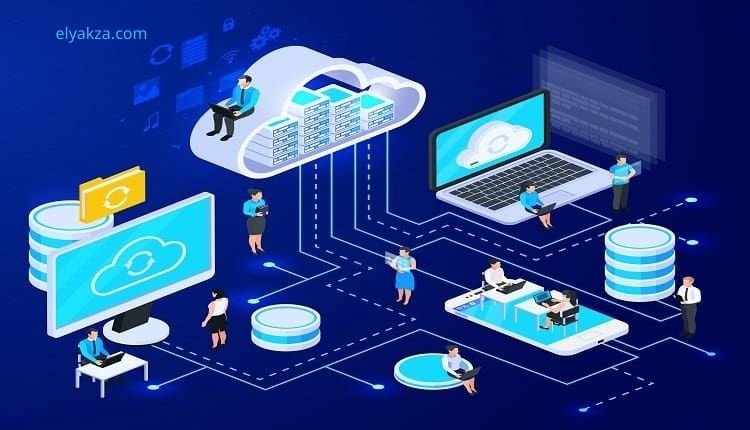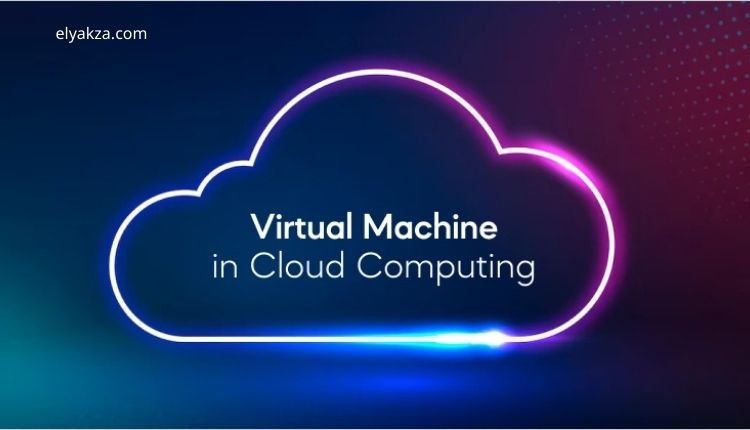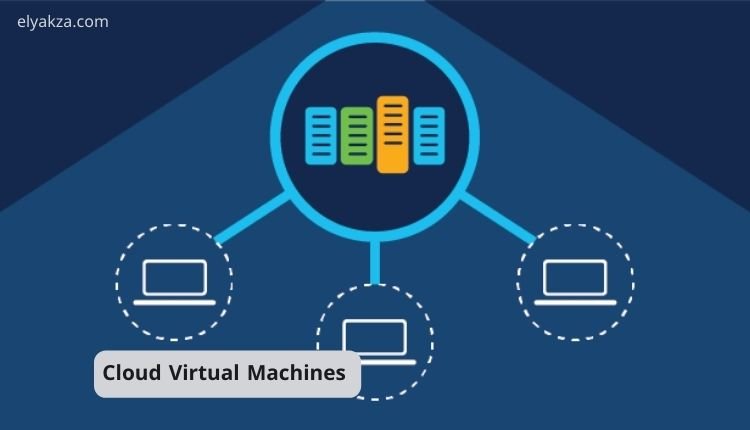Are you passionate about experimenting with virtual machines (VMs), testing new software, or simply honing your sysadmin skills, but lack a dedicated server or a Proxmox setup? You’re not alone. Many aspiring developers, IT enthusiasts, and even small businesses seek cost-effective ways to run virtualized environments without incurring significant expenses. The good news is, you don’t need to break the bank to get started. Cloud providers, in their quest for market share, often offer enticing free tiers, some of which include “always free” virtual machines.
قائمة المحتويات
This comprehensive guide will navigate the landscape of the most popular cloud providers, distinguishing between time-limited free trials and genuinely “always free” services. Our mission is to help you identify the best options for deploying at least one, or even a couple, of virtual machines at absolutely no cost, forever. We’ll delve into the specifics of what each major player offers, uncover their limitations, and provide a detailed, step-by-step walkthrough to get your free virtual machine up and running, focusing on the most promising candidate for persistent free usage.
The Quest for Always Free Cloud VMs: What to Look For
When exploring cloud free tiers, it’s crucial to understand the distinction between a “free trial” and an “always free” offering.
Most cloud providers offer a free trial, which typically grants you a certain amount of credit or access to specific services for a limited period, often 3 to 12 months. During this trial, you might have access to powerful virtual machines and a wide array of services. However, once the trial expires, you’re expected to either upgrade to a paid account or lose access to your resources.
The real treasure for long-term, cost-free experimentation lies in the “always free” tiers. These are a subset of services that a cloud provider makes available indefinitely at no charge, often with specific limitations on resource size, usage, or geographic region.
Key points to consider include:
- Always free tiers usually come with limitations.
- You need to carefully check terms and conditions.
- A valid credit card is almost always required for verification.
Therefore, understanding these nuances is vital to successfully leverage always free cloud virtual machines for your projects.
Popular Cloud Providers: A Closer Look
Let’s examine the free tier offerings of some of the industry’s leading cloud providers. When someone mentions “the cloud,” Amazon Web Services (AWS) and Microsoft Azure are usually the first names that come to mind. However, the market is much broader, including Google Cloud Platform (GCP), Oracle Cloud Infrastructure (OCI), DigitalOcean, Alibaba Cloud, and more. We’ll focus on the ones relevant to finding free virtual machines.
“Read Also: Free SEO Automation Tool“
AWS Free Tier: Limits and Opportunities
Amazon Web Services (AWS) boasts an extensive “Free Tier” designed to help users gain hands-on experience with its vast suite of products and services. While the AWS Free Tier is incredibly generous for many services, such as S3 storage, DynamoDB, and Lambda functions, its offering for virtual machines (EC2 instances) falls primarily under a 12-month free trial.
Upon closer inspection of the “always free” section for compute resources, you’ll find that AWS primarily offers free usage of AWS Lambda (a serverless compute service) with 1 million free requests per month. Unfortunately, for those specifically seeking a persistent, always free cloud virtual machine without a time limit, AWS does not currently provide this option. While you can get a free EC2 instance for 12 months, it will eventually incur costs.
Azure Free Services: A One-Year Window
Microsoft Azure, another colossus in the cloud space, follows a similar model to AWS regarding its virtual machine offerings. Azure provides a “free account” that includes 12 months of free services and a credit for new users to explore its platform. Within this 12-month period, you can indeed run Windows and Linux virtual machines.
Specifically, Azure offers:
- 750 hours each of B1S.
- B2pts v2 (Arm-based).
- B2ats v2 (AMD-based) burstable virtual machines per month for 12 months.
This is a substantial offering and certainly better than a typical 3-month trial. However, like AWS, this is a time-limited free trial. After 12 months, these virtual machines will start incurring charges if you continue to use them. While excellent for short-term projects or learning, it doesn’t fit our “always free” criteria for persistent usage.
Oracle Cloud Infrastructure (OCI) Free Tier: Promises and Hurdles
Oracle Cloud Infrastructure (OCI) has garnered significant attention in the free tier community due to its seemingly generous “Always Free” compute offerings. OCI promises some impressive specifications, including AMD and ARM-based compute instances.
The “always free” tier for compute boasts:
- 24 GB of memory.
- 4 OCPUs.
- Usable as one large virtual machine or up to four smaller ones.
- 3,000 OCPU hours and 18,000 GB hours per month.
On paper, this is a highly attractive proposition for always free cloud virtual machines.
However, the reality of signing up for OCI’s free tier has been a point of frustration for many. Numerous users, including myself, have encountered persistent issues during the signup process, often hitting “rate limit exceeded” errors or difficulties with credit card verification, even when the card is explicitly for verification purposes only and will not be charged. Despite trying multiple cards and refreshes, these obstacles can make it incredibly difficult, if not impossible, for some users to successfully provision their free VMs. While the offering itself is strong, the user experience for onboarding can be a significant barrier.

DigitalOcean: Focused on Value, Not Free VMs
DigitalOcean is renowned for its developer-friendly platform and straightforward pricing model. While they offer competitive pricing for their “Droplets” (virtual machines) and other services, DigitalOcean does not currently provide an “always free” tier for virtual machines. They occasionally offer promotional credits for new users, but these are typically time-limited, making them unsuitable for our objective of persistent, no-cost VM usage.
“Read Also: Building a Powerful Online Store“
Google Cloud Platform (GCP): Your Best Bet for a Free VM
After reviewing the popular options, Google Cloud Platform (GCP) emerges as the most reliable and genuinely “always free” option for virtual machines, provided you adhere to specific limits. GCP’s Free Tier includes a 90-day, $300 credit free trial, but more importantly, it offers a set of “Always Free” resources.
For compute, GCP provides one non-preemptible e2-micro virtual machine instance per month. This is a small but capable VM, perfect for light workloads, personal projects, or testing.
Key Limitations for GCP’s Always Free E2-Micro VM:
- Machine Type: E2-micro instances only.
- Region: Must be deployed in one of the following US regions: Oregon (us-west1), Iowa (us-central1), or South Carolina (us-east1).
- Storage: 30 GB of standard persistent disk per month.
- Network: 1 GB of outbound data transfer from North America to all region destinations per month.
These limitations are important to note, but for many use cases, an e2-micro instance with these specifications is perfectly adequate for an always free cloud virtual machine.
“Read Also: Shopify vs. WooCommerce“
Step-by-Step Guide: Setting Up Your Free GCP E2 Micro Instance

1. Prerequisites for GCP Free Tier
To get started, you’ll need:
- A Google account (e.g., Gmail).
- A valid credit card for verification (you won’t be charged for free tier usage).
2. Signing Up for Google Cloud Platform
Navigate to the Google Cloud Platform website and click “Try for Free.” You’ll be prompted to fill in some personal details like your location, name, and phone number for verification, along with your credit card information. Confirm that you agree to the terms of service.
You will not be billed unless you explicitly upgrade to a paid account or exceed free tier limits.
3. Enabling the Compute Engine API
Once you’re logged into the GCP console, you’ll need to enable the Compute Engine API.
Steps:
- In the search bar at the top, type “Compute Engine” and select “VM instances.”
- If this is your first time, you’ll see a button prompting you to “Enable Compute Engine API.”
- Click it and wait a minute or two for the API to activate.
4. Configuring Your VM for Free Tier Compliance
Now you can create your free instance. Click the “Create Instance” button. It’s crucial to select the correct specifications to stay within the free tier limits.
Configuration details:
- Name: Give your VM a descriptive name.
- Region: Select one of the eligible US regions (us-west1, us-central1, us-east1).
- Series: Set to “E2”.
- Machine Type: Select “e2-micro”.
- Boot Disk:
- Change to “Standard persistent disk”.
- Set the size to “30 GB”.
- Choose your preferred OS (Debian, Ubuntu, CentOS).
- Firewall: Enable HTTP/HTTPS if hosting a web server.
5. Launching and Accessing Your VM
- Click “Create” at the bottom of the page.
- Wait a few minutes for the VM to provision.
- Once running, you’ll see its internal and external IP addresses.
- To access your VM, click the “SSH” button next to your instance in the GCP console.
Within seconds, you’ll have a command-line interface (CLI) to your very own free cloud virtual machine.
“Read Also: Best WooCommerce Plugins“
Cloud Virtual Machines: the Conclusion
Having access to always free cloud virtual machines opens up a world of possibilities for learning, testing, and developing. While AWS and Azure offer robust free trials, Google Cloud Platform stands out with its genuinely “always free” e2-micro instance, provided you diligently follow its specific limitations. Oracle Cloud Infrastructure presents a tempting, yet often frustrating, alternative due to its sign-up hurdles.
By carefully configuring your VM on GCP, you can enjoy a persistent, zero-cost environment to experiment with Linux, host small applications, or simply practice your command-line skills. This guide has equipped you with the knowledge to navigate the cloud’s free offerings and confidently launch your own virtual machine without ever reaching for your wallet.
So, go ahead, try it out, and unlock your creativity in the cloud.
يُعد عمر علي كاتبًا متخصصًا في تصميم وتطوير المواقع والمتاجر الإلكترونية، حيث يقدم محتوى احترافي يساعد القراء وأصحاب الأعمال على فهم كيفية إنشاء متاجر رقمية ناجحة وإدارتها باحترافية. يركز على شرح الأدوات والمنصات مثل ووردبريس، شوبيفاي، وو كومرس وغيرها، بأسلوب مبسط يناسب المبتدئين وأصحاب الخبرة.
من خلال مقالاته، يستعرض عمر علي استراتيجيات تحسين تجربة المستخدم، طرق الدفع الآمنة، وإدارة المنتجات بطريقة تزيد من فرص البيع والنجاح في التجارة الإلكترونية. كما يسلط الضوء على أحدث الاتجاهات الرقمية، ويساعد رواد الأعمال على استغلالها لتطوير مشاريعهم عبر الإنترنت.
يؤمن عمر أن المستقبل للتجارة الرقمية، ويسعى دائمًا لتبسيط رحلتها أمام القارئ، مع تقديم نصائح عملية مدعومة بخبرة وتجارب حقيقية. كتاباته تعتبر مرجعًا أساسيًا لكل من يريد دخول عالم التجارة الإلكترونية بثقة.

